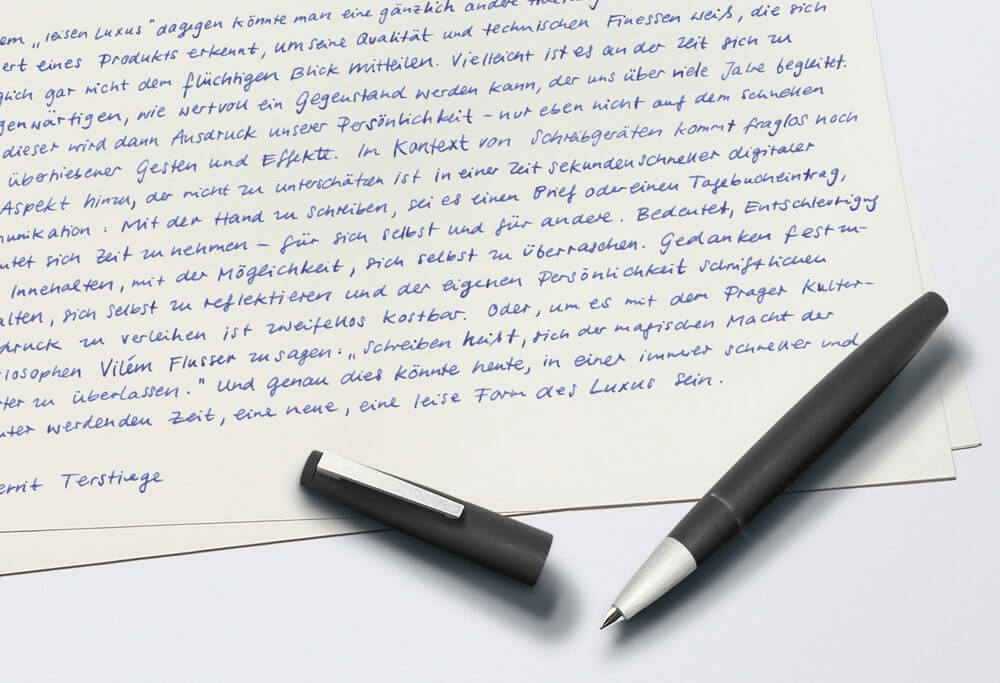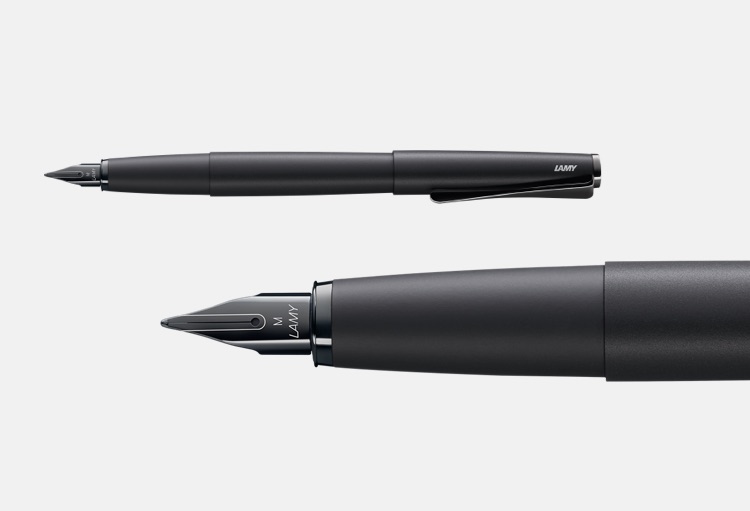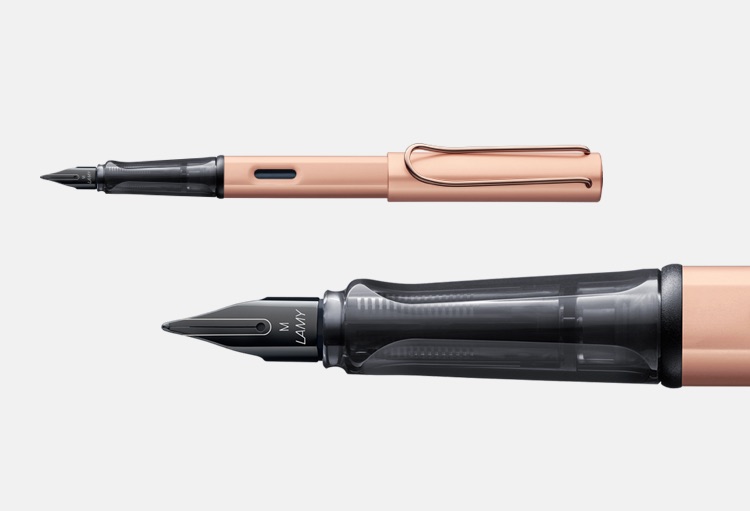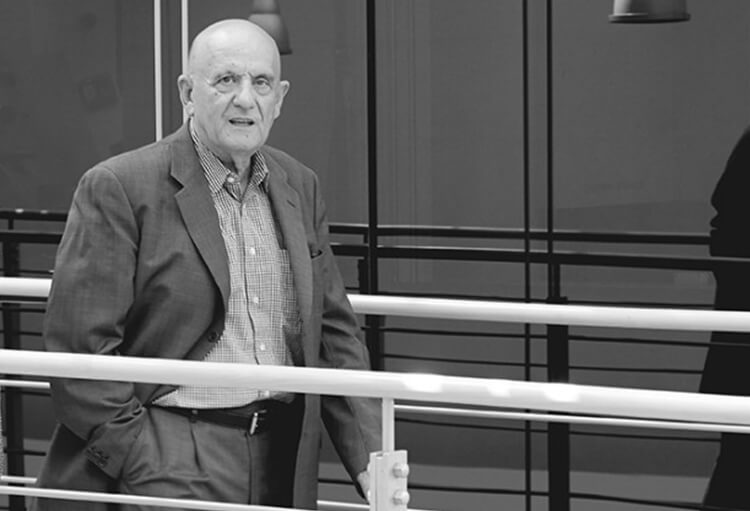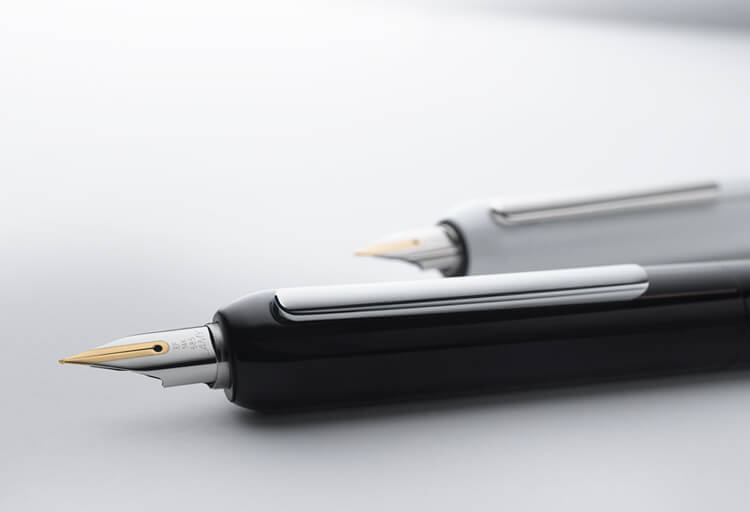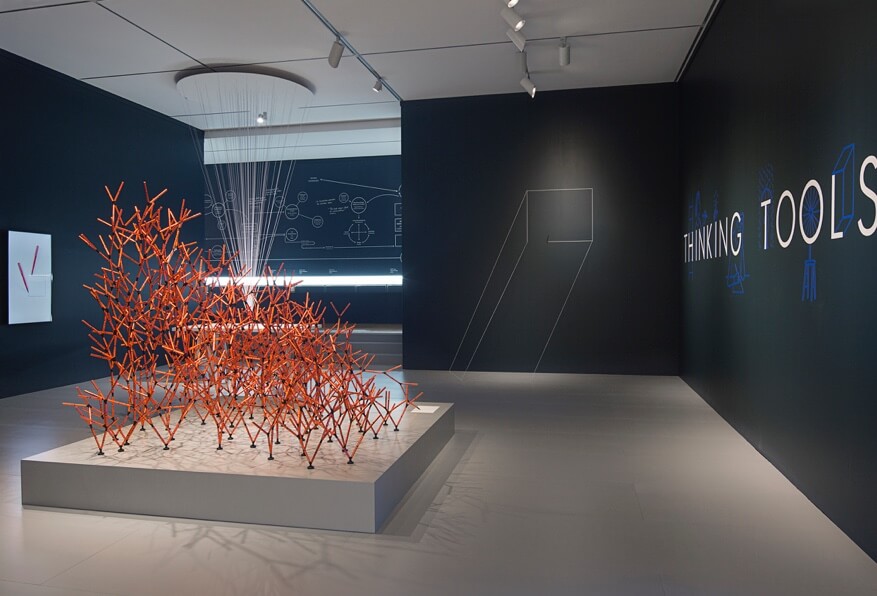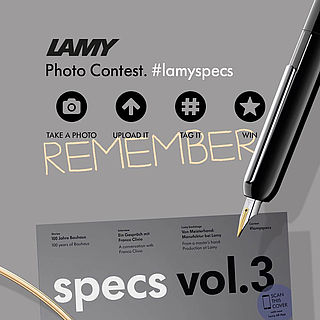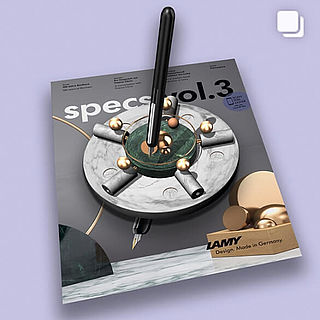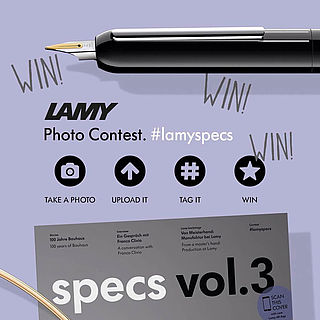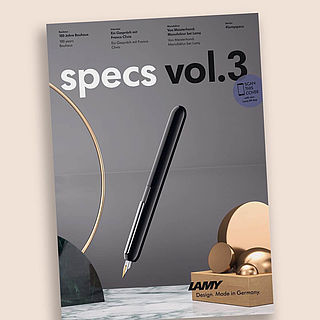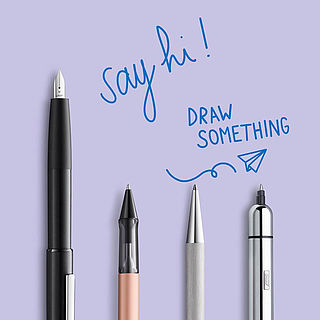The fountain pen: an expression of personality
No other writing instrument enables such individual expression as the fountain pen. The reason for this is the nib. Tailored to the user’s style, it creates unique personal handwriting.

Writing with a fountain pen is like virtuoso choreog- raphy on paper. The result is the image of the user’s handwriting, the speed and the mood in which the text was written.
“The fountain pen is the only writing system which adjusts to the writer”, says Managing Director Peter Utsch, who is responsible for Production at Lamy. Thanks to its elasticity, the nib reacts to the hand’s writing pressure.
If you press too hard, you will find that writing comfort falls and the handwriting becomes untidy; if you don’t press hard enough, your handwriting will be expressionless and interrupted. If you then vary the pressure, style and speed, the pen will react immediately, producing clean, characteristic handwriting. This means that writing with a fountain pen automatically encourages fluent movement – and this helps the user to get the best out of his handwriting.
The main criterion for this is that the writer and the nib are a perfect match. A range of variables play a role in this, particularly the thickness and grind of the nib. “Everybody should use the nib that best fits in with their individual writing style. That is why we always supply a selection of nibs for all our Lamy fountain pens, all of which are interchangeable”, says Utsch.
These range from extra-fine to wide, from straight and round to angled. “We also have our special nibs for left-handers and beginners.” The rule of thumb is that the smaller and tighter the handwriting, the finer the nib should be.
“There is a very good reason why our EF and F nibs are so popular in Asia. They are perfect for the characters used for example in China and Japan.”
The material also plays a major role in the writing qualities of a nib. For example, nibs made of gold are extremely elastic and therefore create an extraordinary writing experience. “A gold nib generally bends to the pressure exerted by the writer”, says Utsch. That enables it to move over the page elegantly, fluently and effortlessly.

Fountain pen quality controls using laser procedures
“Because gold nibs are so filigree, their pro- duction at Lamy involves a great deal of manual work”, explains Utsch. This particularly applies to the grinding operation which demands a great deal of instinct. The gold nib also undergoes ‘writing in’ by hand. “If we find any inaccuracies here, the nib is refinished or rejected.” The polishing and final in- spection with a magnifying glass are carried out on every single nib by specially trained personnel.A range of finishes can be used to achieve the special look of the nibs. “One of the highest quality surface finishes currently available is PVD. This is used for the nibs of the LAMY Lx series, for example.
”A very thin but extremely strong coating is applied to the backing material without changing its properties. “The PVD coating is extremely scratch proof, does not tarnish, retains its surface properties and produces excellent depth of colour.”
Calligraphy nibs are also becoming more and more important, says Utsch, driven in particular by the lettering trend. These produce both wide and also extremely thin lines, creating a striking difference between fine up and wide down strokes. “We are looking closely at this area in the development of new nib versions. Our initial tests with prototypes have already been completed. As soon as we are satisfied with a result, we will launch it on the market.”


